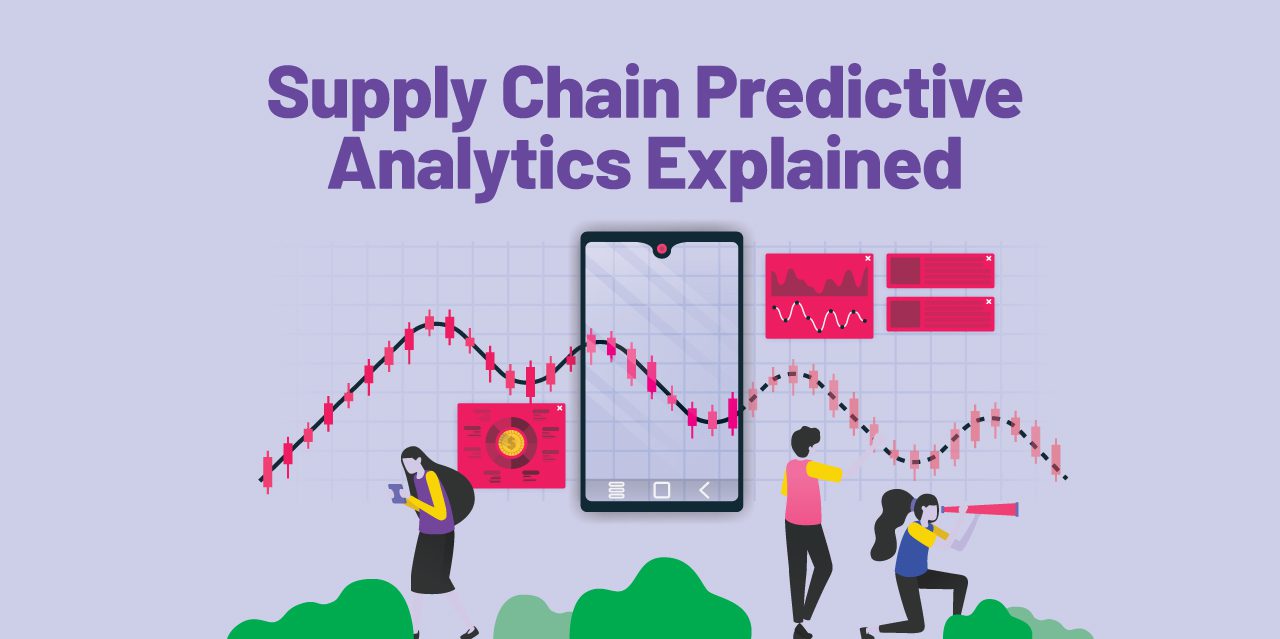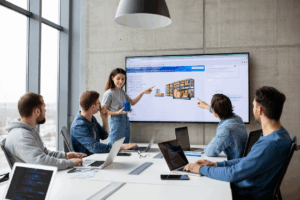Organizations generate vast amounts of data through their activities at various stages of their supply chains. In order to better manage inventory, warehouses, shipping, and procurement, information is recorded with the assistance of applications.
As a result, supply chain analysis is the analysis of data from those different applications using a single ERP system.
For example, warehouse management data may not be very meaningful by itself. However, when all of the information across the supply chain is viewed together, unlimited value opportunities appear.
There are many types of data analytics, but supply chain predictive analytics are the most widely used for most companies. They allow you to make better decisions, optimize operations, better serve customers, decrease costs and improve visibility.
But what are they, and how do you use them? This article will explain supply chain predictive analytics and how your business can take advantage of them.
How Is Predictive Analytics Different Than Other Forms of Analytics?
First and foremost, supply chain predictive analytics can help you to improve visibility into your supply chain and make better decisions. By analyzing past data, you can identify patterns, risk, forecasts and trends that will help you make better predictions of future events and minimize downtime.
Essentially, they recommend actions based on what they learn from descriptive and diagnostic analytics.
This allows you to plan for disruptions and optimize your supply chain operations. For instance, predictive analytics is often used to forecast demand and allocate resources accordingly.
Some Brief Examples of Predictive Analytics in Use
By looking at historical metrics for supply chains such as total shipments versus capacity utilization, traffic volumes along a particular route during peak times, etc., predictive analysis can predict the future needs of a business based on what has happened previously in similar situations.
Using this data, supply chains can plan for future needs by, for instance, increasing their inventory levels when they see that a certain product is being ordered more frequently.
Predictive analytics can also be used to monitor supplier performance. Tracking the delivery times and accuracy rates of suppliers enables supply chains to get a heads-up when a supplier falls behind schedule or starts producing defective products.
This proactive monitoring enables supply chains to take corrective measures before production is adversely affected or deliveries are disrupted.
By knowing when their products will arrive at their destination, supply chain partners can schedule how much inventory should be available for shipment around peak times like holidays. Predictive analytics helps prevent unexpected delays due to weather conditions by finding routes with lower risk exposure.
How to Use Supply Chain Predictive Analytics
Now that you understand what supply chain predictive analytics are and some examples of how they can be used, let’s look at how you can start using them in your own business.
Collecting data is the first step. You will need to collect data from all supply chain partners, which can be a challenge in some cases. However, there are a number of supply chain analytics tools, technology options, and services that can help you do this.
After you have collected the data, you need to analyze it. Excel or Tableau are both standard business intelligence (BI) tools that can do this. Additionally, there are supply chain-specific BI tools that are specifically designed for analyzing data from the supply chain.
Finally, you need to decide how to improve your supply chain operations based on the results of your analysis. It might be necessary to change policies, processes, or even suppliers. It’s important to act based on what you’ve learned from your supply chain predictive analytics.
Which Tools, Technologies And Techniques Can You Use In Predictive Analysis?
There are a number of different tools and techniques available for supply chain predictive analytics. The most important thing is to have good data quality and sufficient historical data. It is also important to use the right analytical method to meet the needs of your business.
One popular method is regression analysis, which uses historical data to develop models for predicting future outcomes. Knowing how various factors interact and their impact on outcomes is just as important as developing prediction models.
Examine your data so that it can be used with predictive analysis tools such as regressions. Determine which supply chain aspects directly affect operational performance and model those first. Then, conduct a linear regression before trying more advanced forms such as logarithmic or exponential regressions.
Another common method is time series analysis, which focuses on how events in the past affect current events. Time series analysis is an important tool for supply chain management that looks at how past events have affected current and future events. Supply chains are long and complex, involving many different organizations.
While it is difficult to predict what supply chains will look like in the future, supply chain managers can predict how they will change by analyzing historical data which will drive efficiency.
Predictive Analysis For Your Business
Analytics come in a variety of forms, but supply chain predictive analytics are the most common. The benefits of supply chain predictive analytics are varying depending on each business, but you can expect to improve visibility, drive deeper insights, help make better decisions, improve resource planning and optimize supply chains.
You can make your supply chain more responsive to changes in the market and improve your bottom line by utilizing these tools and techniques. Businesses of all sizes are becoming increasingly dependent on predictive analytics, so don’t miss out on these opportunities.
Looking for the right software development partner? RTS Labs has helped hundreds of businesses of all sizes successfully develop the right outsourced custom logistics and supply chain software for many business needs. Get in touch with us today to learn more about how we can help.






